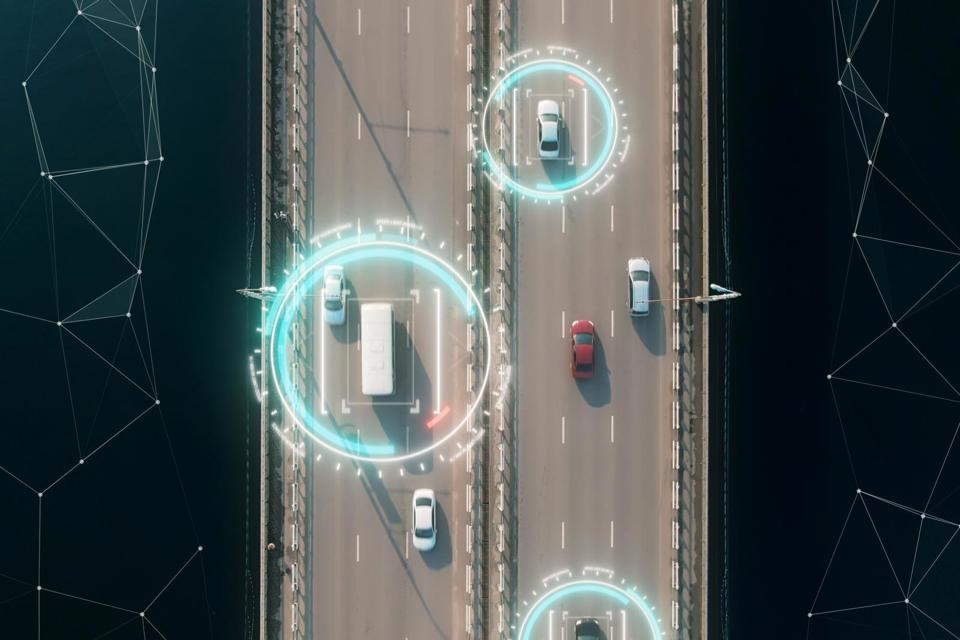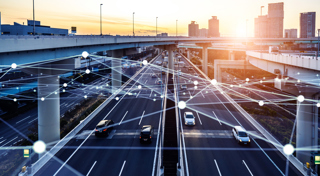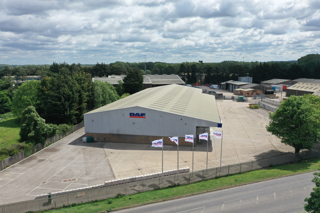What is telematics?
Telematics is a technology which records data about the vehicle it is fitted to and how it is driven.
Although an increasing amount of new vehicles are fitted as standard with connected technology which can record similar data, this is not always accessible to a fleet and can be difficult to interpret.
The use of a third-party system, which often works by fitting an aftermarket unit to a vehicle’s OBD port, ensures the information is collected in a consistent manner which makes it more accessible easier to use by a fleet.
The data it produces ranges from simple location tracking, to how a vehicle is being driven, such as speed as well as highlighting harsh acceleration, braking or cornering.
The information produced by telematics will provide an accurate picture of how a vehicle is used on a daily basis, which many fleets are now using to identify ICE vehicles which can easily be switched for electric ones.
For electric vehicles, it can also monitor the state of charge left in the battery.
How can it improve efficiency?
Organisations which embrace telematics often report significant savings in fuel spend.
This is through helping employees drive more efficiently while behind the wheel as well optimising their routes.
Data collected can in include speed, acceleration and braking: if any of these are too harsh, then they will increase fuel consumption. Telematics can also be used to monitor idling – another cause of excess fuel use.
This information can be used to identify areas for improvement, whether that is taking alternative routes to avoid regular traffic build-up, driver behaviour or training needs.
It can also be used to incentivise drivers to improve, with many organisations setting up rewards schemes such as league tables or driver or the year competitions.
Employees will often drive more efficiently if they know they are being monitored.
This draws on some elements of the Hawthorne Effect psychological phenomenon, which demonstrates that people alter their behaviour when the have an awareness of being observed.
Installation of the technology is also a reminder that the organisation takes driver behaviour seriously.
A number of telematics systems also give drivers a visual reminder they are being monitored by having green, amber and red lights to give instant feedback on their performance.
This allows drivers to take immediate corrective action instead of waiting until the data has been analysed and reported back to them by the fleet decision-maker.
Telematics can also improve efficiency through improved route optimisation.
As the technology can provide real-time tracking of vehicles, this data can be used by route optimisation software to help drivers take better routes, avoid traffic hotspots and ultimately save time and fuel.
How can it be used to improve safety?
Telematics can be configured to record events such as harsh acceleration, sudden braking or hard cornering: all manoeuvres which increase the risk of a collision.
This data can be used to identify drivers who need training , as well as the type of coaching needed.
Analysis of the data can also help identify the root cause of any poor driving. For example, if someone is consistently braking harshly at high speed, then they could be driving too close to the vehicle in front
By looking for patterns at certain types of the day, a fleet operator may also establish if there is a problem with fatigue.
Meanwhile, excessive events at month-end or year-end could suggest employees are under pressure to meet targets, which is contributing to increased risk.
As with improving efficiency, employees will often drive more safely if they known their driver behaviour is being recorded.
Linking in-cab cameras with telematics adds a new dimension to the technology. Some systems relay video footage of an incident directly back to fleet decision-makers, allowing them to see what happened, as well as access the data about the event.
As well as helping to identify any training needs, this can also allocate blame for the collision, therefore protecting employees if they are unfairly accused of causing an incident.
Driver-facing cameras are also available, and some of more advanced ones use artificial intelligence to identify if the driver has performed an unsafe action such as looking at their phone or undoing their seatbelt.
How can it be used in the transition to electric vehicles?
A further use for telematics which is being increasingly used by organisations is to help in the transition to electric vehicles.
Many fleet decision-makers find it is a very useful tool when analysing vehicle usage data.
All of this information should be compared to the capabilities of current BEVs on the market to identify which vehicles are the easiest to replace zero-emission ones.
This data should also be compared with the replacement schedules of existing vehicles, as it may be that a vehicle which is due to be replaced soon but its role is currently not suited for electrification could be switched with another where a BEV would be suitable.
In taking these steps, fleet decision-makers can develop an accurate electrification roadmap that encompasses business need, vehicle availability and renewal timings.
Telematics and routing software can also help employers manage where the vehicle is charged.
Many organisations try to minimise the use of rapid charging, especially on motorways, as there is generally a wide gap between the cheapest available power, which is usually at home, and the most expensive, which is normally the fastest commercial charging.
Additionally, in cases where there is limited charging provision, such as in remote areas, telematics means work can be planned around the few facilities that are available, making EVs usable in places where there might otherwise be difficulties.
In all of these instances, the use of telematics makes planning and monitoring much easier, showing the location and type of chargers in relation to the vehicle route and allowing charging strategies to be implemented effectively.
Gamification
Telematics data can also be used to harness the competitive spirit of employees to encourage them to improve their driving performance.
The information recorded can be used to produce league tables, with rewards such as gift vouchers available for the best performers.
Any incentive scheme should not simply focus of the best drivers, but also reward the most improved employees.
A driver of the year competition is an excellent way of promoting road safety best practice, but it risks stimulating only a small proportion of drivers who are already driving in a safe manner.
The remainder, including the worst-performing drivers, may ignore the scheme because they have no means of winning, so consideration should be given to also finding a way to incentivise the greatest improvements.
How can you win buy-in for the technology from the board and drivers?
Like any service or product, operating and installing telematics into a fleet costs money, and some company directors remain reluctant to introduce the technology.
Sometimes this is through a fear of drivers rebelling against ‘big brother spy in the cabs’, sometimes over concerns about how unions will react, and sometimes through a suspicion that finding the money will fail to deliver a sufficient return on investment (ROI).
While benefits such as potential fuel savings may be an easy sell as it can be simple to demonstrate how it will impact the organisation’s bottom line, others, such as the improvement in duty of care to drivers, are harder to put a figure on.
Typically, fleets who are fitting a telematics system report fuel savings in the region of 10-15% which in most cases will more than cover the cost of operating telematics.
On top of that, there will be the savings through reduced wear and tear, as well as collision costs, which improved driver behaviour will deliver.
Traditionally, drivers many drivers have opposed telematics as they have the impression they are being spied on, although this has subsided in recent years as people have become more used to their smartphones tracking their every movement.
One way to win buy-in for the technology from both drivers and unions is to ensure them it is there for their own protection.
For example, if there is an emergency it can mean they can get instant help as the fleet decision-maker can have real-time information on their location and if there has been a collision.
Data from the technology can also be used to protect drivers from spurious complaints of bad driving, as it will provide an accurate insight of where the vehicle was and how it was being driven at the time of any alleged incident.























Login to comment
Comments
No comments have been made yet.